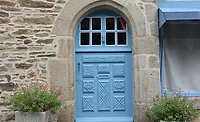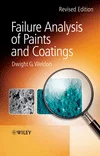Evaluating Mildew Resistance of Interior Paints

Mildew resistance of interior paints has become a topic of greater interest to paint companies in recent years. They are constantly evaluating their ‘new and improved’ formulations for various properties including hiding, staining, scrub resistance, fading and mildew resistance. The test methods for measuring these properties typically are established methods, such as ASTM test methods. For evaluating mildew resistance, however, there is always uncertainty about which test method to follow for a realistic assessment of paints. In this study several commercially available paints of different grades previously tested by independent lab(s) were evaluated in two agar plate-based methods, the standard ASTM D 5590 and the Forest Products (FP) Laboratory method published in 2000, and by the humidity chamber method based on ASTM D 3273. An attempt to establish a correlation between the methods is presented.
Introduction
Testing coatings and surfaces for defacement in interior environments presents different challenges than for exterior coatings. Interior building and home substrates are evolving and vary depending on the need. Home interiors, for the most part, use standard wallboard (dry wall), ceiling tiles, wood panel walls and cement walls for basements. To encompass all these substrates, coatings manufacturers formulate a wide variety of coatings with different grades and sheen to meet the various demands within a building, such as paints for living rooms, foyers, kitchen, bathroom, ceilings, basements etc.Awareness for testing interior coatings for mildew resistance has increased since the year 2000, following many lawsuits and as a result of home building technologies that trap moisture as well as major flood related calamities such as the Katrina tragedy. Many independent laboratories and contract labs have been established for evaluating mold resistance in interior environments.(3) Many methods and guidelines were written for testing mold and mildew resistance and are presented in the literature.(2, 5, 6, 8, 10, 13) There are several test methods for evaluating mildew resistance of coatings, and all vary from each other subtly, each claiming to be the best method to predict in-service performance. The methods that are popularly employed in coatings for testing mildewcidal properties are Military Spec 810F(6), ASTM D 5590 (Agar Plate Method)(8) and ASTM D 3273 (Humidity Chamber Method).(10) Some methods that are similar in principle and used occasionally in the coatings industry are ASTM C 1338(13) and ASTM G 21(9), and a test method from FP laboratories.(5)
Anderson(12) concluded that, when predicting coating mold resistance, selecting worst-case conditions for the test method is important. Methods such as ASTM G 21 that use nutrient-limited media are less stringent, and fungi normally do not grow well due to nutrient-deprived condition. Similarly, we note that even when using highly nutrient-rich medium (Malt Agar), as described in methods like ASTM D 5590 and the Forest Products method, the substrate on which the tests are conducted is equally important as determined by how well the fungi can grow. Substrates that are non-wetting and hydrophobic, used for evaluating interior paints in the laboratory, may overestimate the performance of a coating by not supporting growth on the surface and thus not correctly predicting the performance on hydrophilic surfaces such as paper-based wallboard and wood, which are so commonly used in homes.
Similarly, the fungal spore’s viability, availability and establishment on the surface of a test substrate are equally important factors in conducting a laboratory test method. In the conventional ASTM D 3273 Method, the hanging test panels or substrates are dependent on dissipation of fungal spores from the moist soil bed placed at the bottom of the unit. Probabilities for variability are greater because there is no control over the mode of fungal dispersion. Each fungus is different in its mode of spore formation, dispersion and germination. Eliminating the ambiguity associated with ‘natural’ dispersion within a chamber as described in ASTM D 3273, the method of directly facilitating the spread of fungal spores on test samples as detailed in ASTM D 5590 or a variation of ASTM D 3273 gives consistent growth and avoids variability in spore distribution. Bravery et al 1983(2) describes a humidity chamber method based on direct inoculation of the substrate, which was subsequently adopted by British Standards(14) and is widely used in many laboratories. The ASTM D01 28 Biodeterioration Committee is currently working on a new humidity chamber method for coated building products for interior applications based on direct inoculation on the test substrate.(15)
For this study, select samples of commercially available interior paints were evaluated for mildew resistance properties.(11) Three laboratory methods were compared that vary in substrates used for testing, fungal isolate used, incubation conditions and rating scales. The two agar-based methods tested were the standard ASTM D 5590 and the relatively new and unknown in-house FP laboratory method that differs in substrates for testing. The former uses cellulosic paper such as those supplied by Leneta charts, whereas the latter uses vinyl plastic scrub charts, also supplied by Leneta. The agar plate methods were also compared to a humidity chamber method for interior coatings using wallboard based on the ASTM D 3273 Method.
Materials and Methods
Agar Plate Test Method ASTM D 5590Seven mil-thick paint drawdowns were prepared on one side of the Leneta unlaquered white paper charts and allowed to air dry at room temperature for four days for the ASTM D 5590 method. A set of dried drawdown charts were leached in running deionized water in one-gallon jars at six changes per 24-hour flow rate as described in the method. One-and-a-half square-inch pieces of the dried coated Leneta white paper charts were placed with their painted surface up onto separate malt agar plates as per ASTM D 5590 agar plate method. Each plate and the surface of the sample were then spread inoculated separately with the following organisms at 1 x 108 cfu/plate: Aspergillus niger, Penicillium funiculosum or Aureobasidium pullulans. (Note modifications: ASTM D 5590 method recommends using pooled spore suspensions of A. niger and P. funiculolsum). These plates were incubated at 30 °C for four weeks under high humidity (>85% relative humidity). The plates were observed weekly for surface defacement and rated bi-weekly based on the ASTM D 5590 scale.
Forest Products Lab Test Method Based on Plastic Vinyl Charts
Note that this test method also recommends using Trichoderma hazarianum. For consistency of comparison between ASTM D 5590 and ASTM D 3273, this organism was not included in this study.
Seven-mil-thick paint drawdowns were prepared on Leneta vinyl scrub charts (black) and allowed to air dry at room temperature for ~ four weeks. One and a half square inch pieces of the coated vinyl charts were placed onto malt agar plates. Each plate was then inoculated separately with the following organisms at 1 x 108 cfu/plate: Aspergillus niger, Penicillium funiculosum, or Aureobasidium pullulans. These plates were incubated at 30 °C for four weeks under high humidity (>85% relative humidity). Plates were observed biweekly for surface defacement and evaluated using the method’s rating scales.
Modified Humidity Chamber Test Method Based on ASTM 3273 Using Standard Gypsum Wallboards
The paints were individually applied, one and two coats to 2 X 3 inch pieces of gypsum wallboards and allowed to dry for three days. The dried painted wallboard pieces were then swab inoculated directly on the surface with a mixed pool of fugal spores at 1 x 108 cfu/ml (Aspergillus niger, Penicillium funiculosum and Aureobasidium pullulans) and placed inside a humidity chamber kept inside an incubator set at 30 °C for four weeks. All samples were observed weekly for surface defacement and rated based on the ASTM D 3273 method [Modification: For these tests, the fungal spores were deposited directly onto the wall board pieces by spread inoculation contrary to the ASTM D 3273 method recommendation where the fungal spores are present on a moist soil bed and with no control over inoculum strength and are expected to disseminate with air currents within the chamber and lodge onto the hanging wall boards.]

Results
Table 1 shows the commercial paints used in this study and their mildew resistance ratings.11 Representative samples of ‘Excellent’, ‘Very Good’, ‘Good’, and ‘Fair/Poor’ were selected for the study.




Conclusion and Discussion
This work demonstrates that evaluating coatings on non-porous substrates like vinyl charts that resist wetting by moisture makes it more difficult for fungi to proliferate on the coating surfaces and therefore using them for testing may over estimate the performance of a coating. The results show that in these types of substrates the typical rating scale assigned is ‘1’ and hence may rank as ‘Excellent’ to ‘Very Good’ ratings. On the other hand, coatings on a paper-based porous substrates like white Leneta charts (in this test) that support moisture retention facilitate more vigorous fungal growth on the coating surfaces, and often show profuse fungal colonization with growth ratings assigned ‘4’. Most interior paints available in the market are designed to go on typical standard gypsum wall boards with paper facing on both sides. They absorb more moisture and retain them under humid conditions and thus are frequently susceptible to mold growth. Hence to evaluate interior paints, ASTM D 5590 Method with paper as substrate or a variation of the ASTM D 3273 Method with fungal inoculum directly deposited on the surface of a paper-based wallboard may provide more realistic results. In this test, results from ASTM D 5590 evaluation appear more stringent and many paints show poor efficacy by giving a rating of greater than ‘3’. Hence, any coating that rates ’1’ or less by ASTM D 5590 Method on Leneta charts will obtain a rating of ‘1’ by the Forest Products method and most likely be rated as ‘Excellent’ to ‘Very Good’.This paper was presented at the American Coatings Congress, Charlotte, NC, 2008.
For more information visit www.rohmhaas.com.
Acknowledgements
I thank Scientists, Roger Montemayor and Lynn Munz, Rohm and Haas Company for their excellent technical assistance. I acknowledge Eileen Warwick for her constant encouragement and input in this work and critical reading of the manuscript. Thanks are also due to David Sutton, Eric Johnson and Debbie Zimmer for their support of this publication.Looking for a reprint of this article?
From high-res PDFs to custom plaques, order your copy today!







